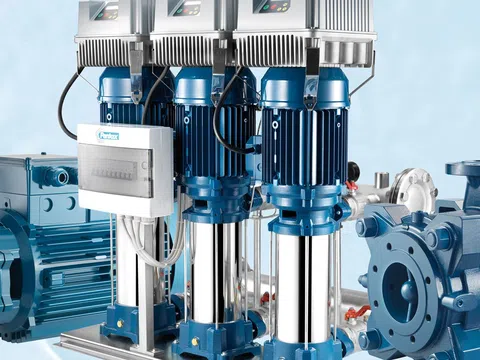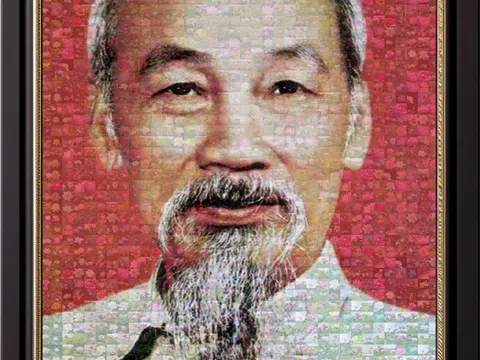1. Khoai đất lạ, mạ đất quen
(Grow sweet potatoes on un-reclaimed soils, but rice seedlings on the cultivated ones)
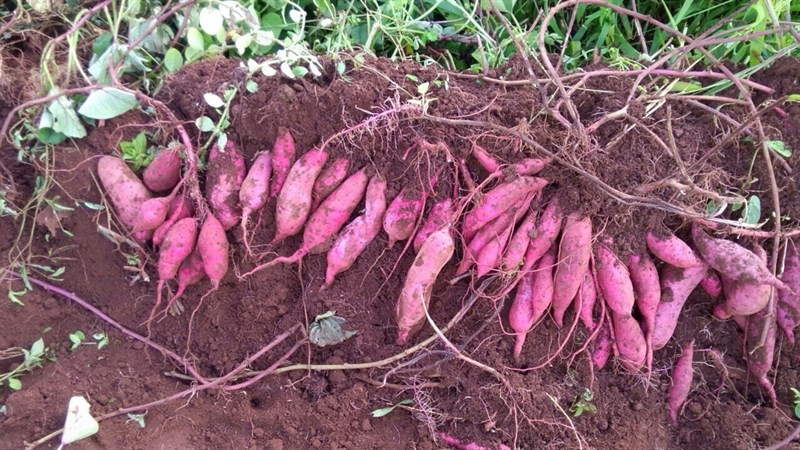 Khoai đất lạ, mạ đất quen
Khoai đất lạ, mạ đất quenKhoai và lúa là 2 cây lương thực chủ yếu của Việt Nam. Chúng khác nhau về nhu cầu với đất. Câu tục ngữ này muốn nói về sự thích ứng của chúng với độ thuần thục của đất. Khoai ưa “đất lạ” tức đất mới khai hoang, hoặc đất trồng khoai lần đầu tiên. Về mặt vật lý, đất còn tơi xốp, thoát nước, chưa bị ‘chai chặt’; về hóa học, chưa bị hao kiệt các nguyên tố dinh dưỡng mà cây cần để tích lũy làm củ. Côn trùng và bệnh hại chưa có nhiều, đăc biệt là sâu ăn lá và đục củ.
Trái lại, mạ hay cây lúa nói chung, lại thích hợp với “đất quen”, tức đất đã được khai hoang, đã từng gieo mạ, trồng lúa trước đó. Địa hình mặt ruộng đã khá phẳng, đồng đều, thuận lợi cho quần thể lúa có bộ rễ chùm, ăn nông phát triển. Trên đất này, ruộng đã được tích tụ sét, hình thành tầng đế cày, giữ cho lúa một chế độ nước ổn đjnh với lớp nước mặt phủ thường xuyên. Trong môi trường ngập nước, phản ứng oxy hóa-khử oxy giải phóng một lượng dưỡng chất đáng kể cho cây lúa.
Sweet potatoes and rice are two main food crops in Vietnam. They are quite different in soil requirement. This proverb implies their adaptive ability to soil cultivation conditions. Sweet potatoes are well adapted to un-reclaimed soils, viz. the soil areas newly opened and/or those are used to grow sweet potatoes for the first time. These soils are characterized by high porosity, low compactness, good water drainage, high supplying capacity of the nutrients needed for tuber root formation. Harmful pests and diseases do not yet crowd to damage the crop leaves and tubers.
In contrary, rice seedling and rice crop prefer the soil areas already reclaimed, viz. the plots are already cultivated with rice seedlings or rice crop before. The field surface is flat thanks to leveling, suitable for the shallow lateral root development. Clay particles have been cumulated resulting in a hardpan layer that sustaining the irrigation rice field a standing water layer. In such submergence media, large amounts of plant nutrients are released for rice seedlings and rice crop as well.
2. Trồng tre đất sỏi, trồng tỏi đất bồi
(Grow bamboo on skeletal sandy soils, but onion on the alluvial ones)
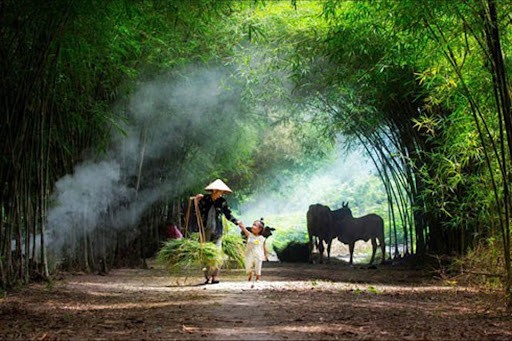 Trồng tre đất sỏi, trồng tỏi đất bồi
Trồng tre đất sỏi, trồng tỏi đất bồiTục ngữ này khái quát phương châm chọn đất phù hợp cho 2 loài cây trồng quen thuộc, nhưng khá khác nhau. Tre là cây dài ngày, có bộ rễ khỏe, xuyên sâu; lấy thân làm nguyên liệu chế tác hàng trăm vật dụng từ làm nhà, đan thuyền đến các vật dụng hàng ngày, làm bóng mát, hàng rào, chắn sóng, ngăn giông bão, … Tre có sức chống chịu rất khỏe, có khả năng thu chất dinh dưỡng từ đất cằn cỗi, khắc nghiệt. Chọn đất thô là thích hợp, giành đất tốt hơn cho cây khác.
Trong khi đó tỏi là cây ngắn ngày, bộ rễ ăn nông, trồng để lấy thân ngầm, ưa đất tơi xốp; cần có lượng dinh dưỡng khá lớn trong thời gian sinh trưởng ngắn. Các đất bồi ven sông hay bờ biển, đảo đáp ứng được các yêu cầu này. Lời khuyên ngắn gọn, dễ nhớ làm định hướng cho nông dân sắp xếp cơ cấu cây trồng phù hợp khi đi khai hoang hoặc sử dụng quĩ đất của nông hộ.
The proverb implies to advice on choosing soil types suitable for two crops which are different in soil condition requirements. Bamboo is a perennial crop with a strong root system that can penetrate hard soil layers. Bamboo is grown for fencing, shading, protecting dykes, preventing typhoon, etc. Its stems can be used for building boats, houses, as well as making numerous daily use goods and others. Bamboo is highly resistant to poor soil conditieful, therefore, growing this crop on skeletal sandy soils is reasonable whereas saving the more fertile for other crops.
Onion is a short-term crop with shallow root system, preferring soft loam soil and requiring large amounts of nutrient realized from the soil body during a short period of time. It is that the alluvial soils along the river side and/or the sea and islands are the best choice for growing this crop. The proverb gives an useful advice to arrange the cropping patterns on farmers’ lands and/or newly opened lands.
3. Đất lành chim đậu
(Healthy land is for birds crowding)
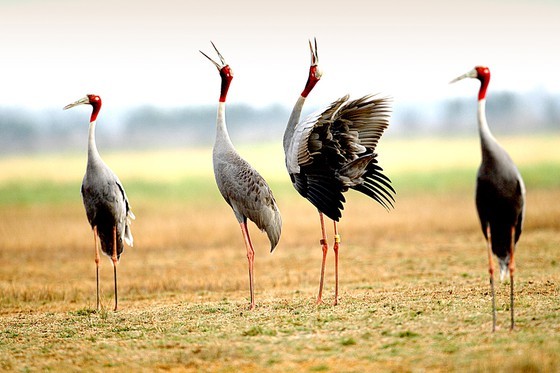 Đất lành chim đậu
Đất lành chim đậuMối quan hệ giữa môi trường sống và sinh vật được để cập trong câu tục ngữ này. Đất lành có các đặc điểm chất lượng, duy trì điều kiện sống cho sinh vật (trong đất và trên mặt đất), sinh trưởng và sinh sôi nẩy nở, như: an toàn, phì nhiêu, đủ nước và thức ăn, không bị đe dọa. Trên mặt đất, các quần thể thực vật và động vật phong phú, tạo ra chỗ trú ngụ và nguồn thức ăn hấp dẫn các loài tìm đến. Hai thực thể đất và chim tương tác lẫn nhau, khi môi trường đất được khỏe, lành mạnh, thì sinh vật như chim tụ hội và làm cho đất thêm phì nhiêu, cây đơm hoa kết trái, hệ sinh thái trở nên đa dạng, phát triển bền vững.
The relationship between living world and their environment is dealt with in this proverb. Healthy land refers to the lands of high quality, providing suitable living conditions for the fauna and flora (in and above the soil surface). These include safety, fertility, sufficiency of water and nutrition, free of threats, etc. Above the soil surface, vigorously development of vegetal and animal lives will serve dwelling places and feeding sources that are attractive to other species to come. Land and bird is in interactive relation. The more land is healthy, the more birds are crowded and the land in turn becomes more fertile. Forests becomes more abundant generating more diverse ecosystems. As a result, the life cycle is better sustainable.
4. Đất cũ đãi người mới
(Old cultivated lands offer chance for the new comers)
Tục ngữ này nói về kinh nghiệm chọn đất. Sử dụng đất cũ (đất đã từng canh tác trước đó) bao giờ cũng có lợi thế (đỡ công khai hoang, chặt cây, đào rễ lớn, nhặt cuội, đá; mặt ruộng bằng phẳng hơn, độ phì nhiêu nâng lên,…). Đối với những nông dân trẻ, còn ít kinh nghiệm và nguồn lực, những người mới đến lập nghiệp gặp được đất cũ là một cơ may rất tốt. Nơi đây đã từng có người đi tiên phong, có thể thừa kế kinh nghiệm. Đây cũng là cách khuyến nông giữa nông dân với nhau, đơn giản mà hiệu quả.
The proverb advises farmers in selecting old lands for starting up their farming. Use of already cultivated lands has many advantages, i.e. reducing labor for reclamation, logging and enrooting big trees, getting out rocks and weeding, etc. The soil plots are more flat and fertile. For young farmers who are short in resources and experience as well as the new comers, availability of old cultivated lands is a good chance to learn much from those who came efore. In these places, the pioneers can play a positive role in ‘farmer-to farmer’ extension training.
5. Người ta là hoa của đất
(People is flowers of the lands)
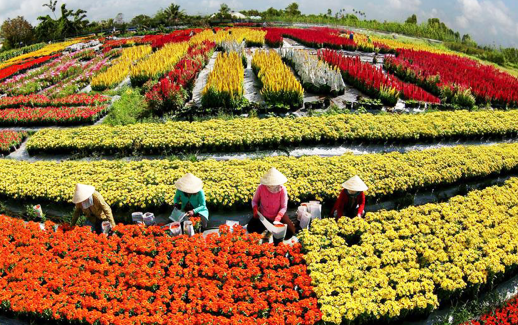 Làng hoa mùa thu hoạch
Làng hoa mùa thu hoạchVới độ phì nhiêu của mình, đất là môi trường cho vô số các loài cây, loài hoa muôn hồng ngàn tía. Khi chưa có con người, hành tinh hoang sơ của chúng ta chắc chắn đã có cây cỏ hoa lá; song chắc chắn hệ thực vật chưa đa dạng và cảnh quan chưa tuyệt vời như ngày nay. Câu tục ngữ tôn vinh vị trí của con người trong sử dụng và bảo vệ tài nguyên đất, cũng là thông điệp nhắc nhắc nhở mọi người bảo vệ vẻ đẹp kỳ diệu của Trái Đất.
With its fertility, the soil crust plays a special role in making the land resource becoming a supportive place for the fauna and flora on the earth planet. The people with their labor and intelligence, from generation to generation have made this planet becoming an ideal settlement site for the mankind. The proverb appreciates and honors the role of the people in the global land use and development and at the same time reminding about the land preservation.
Theo Tạp chí Khoa học Phát triển Nông thôn Việt Nam


